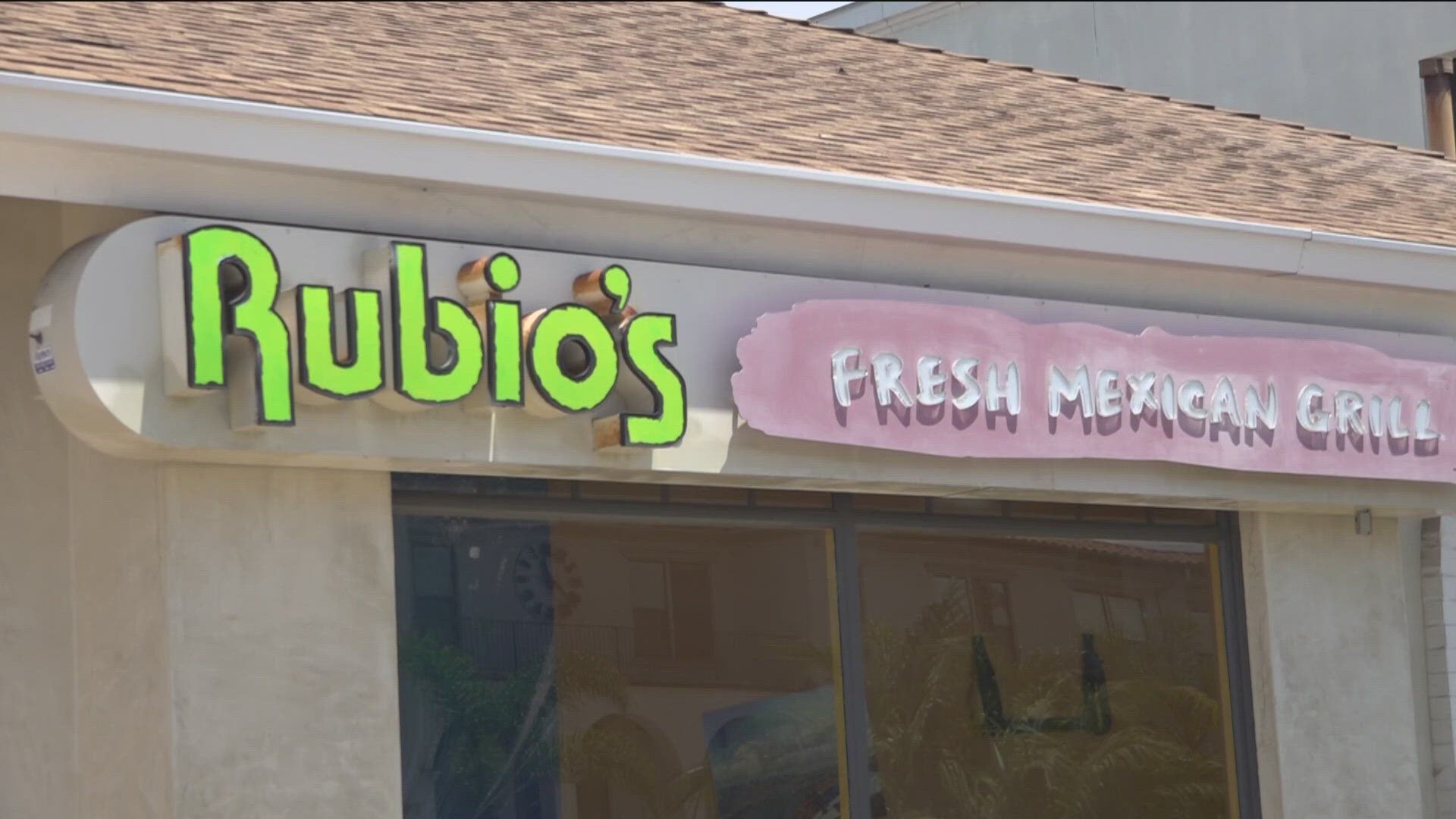SAN DIEGO — Why are Rubio’s and so many other restaurants closing?
Experts say it’s part of a nationwide trend, citing inflation and wage increases as factors.
Rubio’s is closing 48 of its "underperforming" locations, including 13 in San Diego, located at:
- 1480 Eastlake Pkwy Suite 901, Chula Vista, CA 91915
- 419 Parkway Plaza, El Cajon, CA 92020
- 1485 E Valley Pkwy Suite A-6, Escondido, CA 92027
- 9187 Clairemont Mesa Blvd Suite 7, San Diego, CA 92123
- 910 Grand Avenue, San Diego, CA 92109
- 8935 Towne Centre Dr., Suite 100, San Diego, CA 92122
- 9254 Scranton Rd, Ste 105, San Diego, CA 92121
- 2260 Callagan Hwy Bldg. 3187, San Diego, CA 92136
- 7835 Highlands Village Pl Suite D101, San Diego, CA 92129
- 1711 University Drive, Suite 110. Vista, CA 92083
- 9500 Gillman Drive, Food Ct, La Jolla, CA 92093
- 1158 W San Marcos Blvd Suite A, San Marcos, CA 92078
- 437 Hwy 101 #117, Solana Beach, CA 92075
Eighty six stores in California, Arizona and Nevada will remain open.
"I'm bummed they're closing. I go there at least once a week," said one customer.
While customers were shocked and saddened, experts in the field say the news isn't all that surprising.
"This is a tough environment right now for restaurants. We'll probably continue to see more of that," said Jonathan Maze, Editor-in-Chief for Restaurant Business.
The Rubio’s announcement comes just over a week after Red Lobster shut down dozens of its restaurants, including the one in Mira Mesa.
The company cited financial and operational challenges, and filed for bankruptcy shortly after.
Meanwhile, in a statement, Rubio’s said its closings were brought about by the rising cost of doing business in California.
This, after the company filed bankruptcy in 2020.
"Essentially, we're in a cutback environment, meaning that people this year are eating out less than they did last year. And a lot of that is due to inflation," said Maze.
Maze said inflation has also forced restaurants to raise prices, giving customers even less incentive to eat out.
Rubio’s and Red Lobster are part of a growing list of chains announcing closures.
In California, there's the added challenge of a minimum wage increase, which went from $16 an hour to $20.
“It's not just a wage increase, it's the speed of it. So it went up 25% basically, overnight. Now restaurants had, you know, months to prepare, but that's only months to prepare, you know, the effect of this is pretty significant," said Maze.
Plus, restaurants are still struggling with pandemic-related losses, and trying to compete in an overly saturated industry.
"The segment is just bloated. There's just too many restaurants out there competing," said University of San Diego School of Business economics professor Alan Gin.
Gin said the hardest hit restaurants appear to be those in what economists refer to as the stuck in the middle category.
"You have the low end fast food, and then you have higher end restaurants. And maybe those have held up better, while those in between, you know, don't distinguish themselves one way or the other. They're not as cheap as the fast food, and they're not as high as the fancier restaurants. And so, you know, they target a middle ground, and maybe then as a result of that with changing tastes, they don't satisfy anybody," said Gin.
But not all closures are finance based.
Sammy's in Mission Valley just closed after nearly 30 years in business.
The owner told CBS 8 that despite their desire to stay, the landlord did not offer them a new lease.
WATCH RELATED: Rubio's closes nearly 50 California locations (June 1, 2024)

